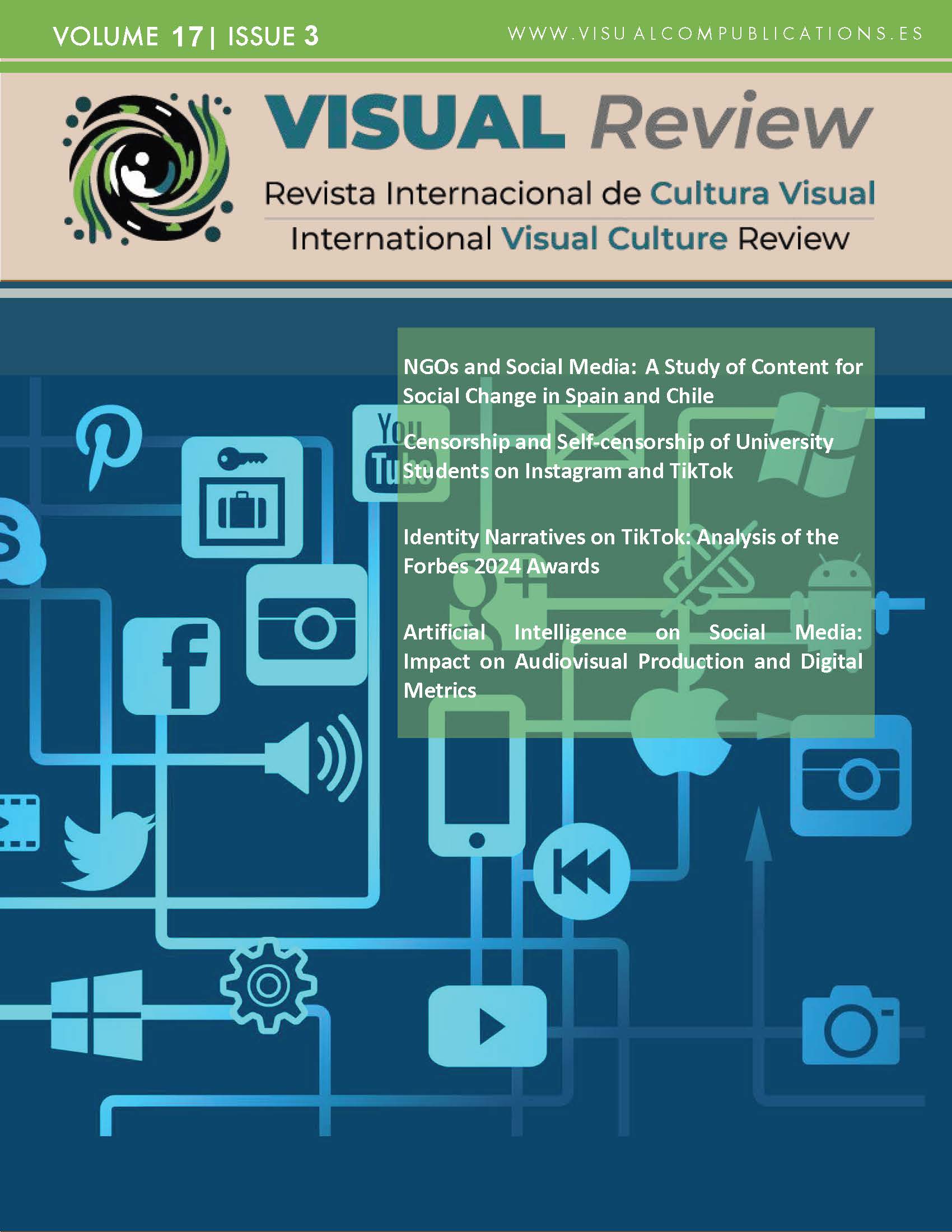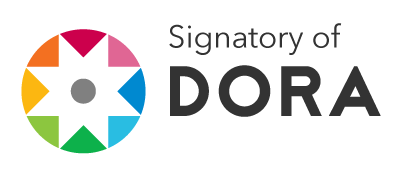Use of Social Networks in Spanish Hortofruit Companies
Content Analysis on Instagram and TikTok
DOI:
https://doi.org/10.62161/revvisual.v17.5777Keywords:
Social networks, Reputation, Hortofruit companies, Communication, Notoriety, Brands, ConsumerAbstract
This article examines the impact of communication on social networks as part of the marketing strategy of Spanish fruit and vegetable companies. The objective is to examine the type of content that these companies share, demonstrate the need for interaction between brand and consumer to generate trust, in addition to defining the most effective type of publications to achieve engagement between both. The information will be collected through content analysis of Instagram and TikTok, social networks most used by digital native generations with purchasing decision-making power and spending autonomy: millennials and centennials.
Downloads
Global Statistics ℹ️
|
555
Views
|
1925
Downloads
|
|
2480
Total
|
|
References
Aaker, D. A. (1996). Building strong brands. The Free Press.
Aced, C. (2013). Relaciones públicas 2.0: Cómo gestionar la comunicación corporativa en el entorno digital. Editorial UOC
Ariantara, Y. (2021). The Effect of Experiential Marketing on Customer Satisfaction of Cafe Tik Tok in Bengkulu City. Jurnal Ekonomi, Manajemen, Akuntansi Dan Keuangan, v. 2, n. 3, 238-246. https://doi.org/10.53697/emak.v2i3.97
Ardèvol-Abreu, A. (2015). Framingo teoría del encuadre en comunicación. Orígenes, desarrollo y panorama actual en España. Revista latina de comunicación social, (70), 423-450.
Asedas, & Asedas. (2023, 20 diciembre). Radiografía del comercio electrónico de alimentación en España | ASEDAS. ASEDAS. https://www.asedas.org/radiografia-del-comercio-electronico-de-alimentacion-en-espana/
Balmer, J. M. T. (2012). Corporate brand management imperatives: Custodianship, credibility, and calibration. California Management Review, 54(3), 6-33. https://doi.org/10.1525/cmr.2012.54.3.6
Barreiro, B. (2018). Buceando en las tendencias alimentarias de los españoles. Ministerio de agricultura, pesca y alimentación.
Blankson, C., & Kalafatis, S. P. (2007). Positioning strategies of international and multicultural-oriented service brands. Journal of Services Marketing, 21(6), 435-450. https://doi.org/10.1108/08876040710818830
Brodie, R. J., Hollebeek, L. D., Juric, B., & Ilic, A. (2011). Customer engagement: Conceptual domain, fundamental propositions, and implications for research. Journal of Service Research, 14(3), 252-271. https://doi.org/10.1177/1094670511411703
Calvo, A. (2021a, noviembre 17). El proceso de digitalización de la agricultura. Agroptima. https://blog.agroptima.com/es/blog/el-proceso-de-digitalizacion-de-la-agricultura/#:~:text=La%20digitalizaci%C3%B3n%20de%20la%20agricultura,gesti%C3%B3n%20agr%C3%ADcola%20de%20nuestras%20explotaciones.
Calvo, A. (2021b, noviembre 17). El proceso de digitalización de la agricultura. Agroptima. https://blog.agroptima.com/es/blog/el-proceso-de-digitalizacion-de-la-agricultura/#la_digitalizacion_de_la_agricultura_en_la_actualidad
Campos, A. (2024, 16 febrero). El papel del ecommerce en la digitalización de la agricultura. Increnta. https://increnta.com/insights/digitalizacion-de-la-agricultura/
Casado-Molina, A. M., Méndiz-Noguero, A., & Peláez-Sánchez, J. I. (2013). The evolution of Dircom: From communication manager to reputation strategist. Communication & Society, 26(1), 49-68. https://doi.org/10.15581/003.26.36151
Castells-Fols, L., Pont Sorribes, C., & Codina, L. (2022). La sostenibilidad de los medios a través de los conceptos de engagement y relevancia: scoping review.
Chong, D., & Druckman, J. N. (2007). Framing theory. Annual Review of Political Science, 10, 103-126. https://doi.org/10.1146/annurev.polisci.10.072805.103054
Comercio electrónico para el sector agroalimentario. (s. f.). [Vídeo]. Comercio Electrónico Para el Sector Agroalimentario | EOI. https://www.eoi.es/es/savia/publicaciones/80233/comercio-electronico-para-el-sector-agroalimentario
Del Fresno García, M. (2011). Netnografía. El análisis de la presencia digital. Madrid: Editorial UOC.
Dirección General de Industria y de la Pequeña y Mediana Empresa. (2023). Retrato de la PYME 2023: Datos DIRCE a 1 de enero de 2023. https://ipyme.org/Publicaciones/Retrato%20de%20la%20PYME/Retrato-PYME-DIRCE-1-enero-2023.pdf
Dowling, G. (2016). Corporate reputation: Perspectives of measuring and managing a principal risk. Oxford University Press.
Entman, R. M. (1993). Framing: Toward clarification of a fractured paradigm. Journal of Communication, 43(4), 51-58. https://doi.org/10.1111/j.1460-2466.1993.tb01304.x
Fombrun, C. J., & Van Riel, C. B. (2004). Fame & fortune: How successful companies build winning reputations. Financial Times Prentice Hall.
Gallardo Cobos, R., Sánchez Zamora, P., Lara Vélez, P., Santesteban García, L. G., & García Torrente, R. (2024). Retos de la digitalización para el sector agroalimentario. Papeles de Economía Española, (179), 140–159. https://www.funcas.es/wp-content/uploads/2024/04/PEE-179_Gallardo-et-al.pdf
Gobierno de España. (2022, February 9). Real Decreto 113/2022, de 8 de febrero, por el que se regula el reconocimiento y funcionamiento de las organizaciones de productores del sector agroalimentario. Boletín Oficial del Estado, núm. 33, 17689–17724. https://www.boe.es/eli/es/rd/2022/02/08/113
Goffman, E. (1974). Frame analysis: An essay on the organization of experience. Harvard University Press.
Guiñez-Cabrera, N., Mansilla-Obando, K., Jeldes-Delgado, F. (2020). La transparencia publicitaria en los influencers de las redes sociales. Retos. Revista de Ciencias de la Administración y Economía, v. 10, n. 20, 265-281. https://doi.org/10.17163/ret.n20.2020.05
Han, Y. (2020). Advertisement on Tik Tok as a Pioneer in New Advertising Era: Exploring Its Persuasive Elements in the Development of Positive Attitudes in Consumers. The Frontiers of Society, Science and Technology, v. 2, n. 11, 81-92. https://francis-press.com/papers/2503
Herencia, C. A. B. (2019). La representación digital del engagement: hacia una percepción del compromiso a través de acciones simbólicas. https://www.redalyc.org/journal/5894/589465859013/html/
Hollebeek, L. D. (2011). Demystifying customer brand engagement: Exploring the loyalty nexus. Journal of Marketing Management, 27(7-8), 785-807. https://doi.org/10.1080/0267257X.2010.500132
Hollebeek, L. D., Glynn, M. S., & Brodie, R. J. (2014). Consumer brand engagement in social media: Conceptualization, scale development and validation. Journal of interactive marketing, 28(2), 149-165.
Hooley, G., Piercy, N. F., & Nicoulaud, B. (2017). Marketing strategy and competitive positioning (6th ed.). Pearson.
IAB Spain. (2023). Estudio anual de redes sociales 2023 (Versión reducida). https://www.iabspain.es/wp-content/uploads/estudio-anual-redes-sociales-2023-vreducida.pdf
IEEE Xplore Full-Text PDF: (s. f.). https://ieeexplore.ieee.org/stamp/stamp.jsp?tp=&arnumber=8792669
Innova Market Insights. (2024, 3 diciembre). Últimas tendencias alimentarias en España. Las tendencias de consumo en España son activamente. https://www.innovamarketinsights.com/es/tendencias/ultimas-tendencias-alimentarias/
Kapferer, J. N. (2008). The new strategic brand management: Creating and sustaining brand equity long term (4th ed.). Kogan Page.
Keller, K. L. (2013). Strategic brand management: Building, measuring, and managing brand equity (4th ed.). Pearson Education.
Kotler, P., & Keller, K. L. (2016). Marketing management (15th ed.). Pearson.
López Font, L., & Cuesta Cambra, U. (2012). Comunicación corporativa y redes sociales: cambiarlo todo para que nada cambie. adComunica. Revista Científica de Estrategias, Tendencias e Innovación en Comunicación, (3), 23-25. https://doi.org/10.6035/2174-0992.2012.3.2
Losada, J. C. (2019). Comunicación de crisis en un mundo conectado. UOC.
Ma, L., Feng, J., Feng, Z., Wang, L. (2019). Research on User Loyalty of Short Video App Based on Perceived Value—Take Tik Tok as an Example. 16th International Conference on Service Systems and Service Management (ICSSSM), 1-6. https://doi.org/10.1109/ICSSSM.2019.8887751
Ministerio de agricultura pesca y alimentación. (2023). II PLAN DE ACCIÓN 2021-2023: ESTRATEGIA DE DIGITALIZACIÓN DEL SECTOR AGROALIMENTARIO y DEL MEDIO RURAL. https://www.mapa.gob.es/es/ministerio/planes-estrategias/estrategia-digitalizacion-sector-agroalimentario/ii-plan-accion-estrategia-digitalizacion-2021-2023_tcm30-583049.pdf
Ministerio de Agricultura, Pesca y Alimentación. (2023). Informe anual de la industria alimentaria en España 2022. https://www.mapa.gob.es/dam/mapa/contenido/alimentacion/temas/industria-agroalimentaria/informacion-economica-sobre-la-industria-agroalimentaria/20240126informeanualindustria2022-20234t23ok.pdf
Observatorio para la Digitalización del Sector Agroalimentario: Análisis del estado actual de la digitalización del sector agroalimentario español. (2023). En https://www.mapa.gob.es/. Recuperado 10 de septiembre de 2024, de https://www.mapa.gob.es/es/desarrollo-rural/temas/innovacion-medio-rural/estudio_3def_tcm30-655779.pdf
Park, C. W., Jaworski, B. J., & MacInnis, D. J. (1986). Strategic brand concept-image management. Journal of Marketing, 50(4), 135-145. https://doi.org/10.1177/002224298605000401
Peralta, E. O. (s. f.) TikTok Versus Instagram Reels: Qué son y Cómo Puedes Usarlos. https://www.genwords.com/blog/tiktok
Patiño, L. (2020a, 13 de abril). Colombianos en redes sociales: más móviles y más videos. El Tiempo. https://www.eltiempo.com/tecnosfera/apps/redes-sociales-mas-usadas-en-colombia-segun-comscore-483768
Plaza Llorente, J. M. (2019). Cadena de valor agroalimentaria, precios y digitalización. Revista de Estudios Agrosociales y Pesqueros, 254, 85–111. https://www.mapa.gob.es/ministerio/pags/biblioteca/revistas/pdf_reeap/Pdf_REEAP_r254_85_111.pdf
Peng, L. (2021). Impact of Tik Tok on Digital Marketing Based on Case Studies and SWOT Analysis. 2021 12th International Conference on E-Education, E-Business, E-Management, and E-Learning (IC4E 2021), 337-340. https://doi.org/10.1145/3450148.3450188
Pérez Rey, J. (2020). Tik Tok mucho más que bailecitos y centennials. Interactiva. Revista de la comunicación y el marketing digital, n. 190, 56-63. https://dialnet.unirioja.es/servlet/articulo?codigo=7607078
Ries, A., & Trout, J. (2001). Positioning: The battle for your mind (Rev. ed.). McGraw-Hill.
Rodríguez, E. (2023, 16 enero). ‘Teoría del Framing’: el encuadre perfecto para tu marca — hola branding. Hola Branding. https://www.holabranding.es/blog/teoria-framing-branding
Sánchez Romero, C., & López Berlanga, M. C. (2020). Percepción de actitudes nocivas en el uso de las redes sociales en los jóvenes adolescentes. Revista Interuniversitaria de Investigación en Tecnología Educativa, (8), págs. 145-165. https://doi.org/10.6018/riite.401801
Scheufele, D. A. (1999). Framing as a theory of media effects. Journal of Communication, 49(1), 103-122. https://doi.org/10.1111/j.1460-2466.1999.tb02784.x
Tomas, D. (2020, 8 de agosto).TikTok para empresas: como promocionar tu marca [Incluido el video]. https://www.cyberclick.es/numerical-blog/como-usar-tik-tok-para-promocionar-tu-marca-o-tu-empresa
Van Doorn, J., Lemon, K. N., Mittal, V., Nass, S., Pick, D., Pirner, P., & Verhoef, P. C. (2010). Customer Engagement Behavior: Theoretical Foundations and Research Directions. Journal of Service Research , 13(3), 253-266. https://doi.org/10.1177/1094670510375599.
van Doorn, J., Lemon, K. N., Mittal, V., Nass, S., Pick, D., Pirner, P., & Verhoef, P. C. (2010). Customer engagement behavior: Theoretical foundations and research directions. Journal of Service Research, 13(3), 253-266. https://doi.org/10.1177/1094670510375599
Van Riel, C., & Fombrun, C. J. (2007). Essentials of corporate communication: Implementing practices for effective reputation management. Routledge.
Vegas-García, L., & Paniagua, F. J. (2023). Estrategias de las empresas del sector agroalimentario en las redes sociales. Las empresas malagueñas en Instagram. Redmarka Revista de Marketing Aplicado, 27(1), 55-77. https://doi.org/10.17979/redma.2023.27.1.9609
Verhoef, P. C., Reinartz, W. J., & Krafft, M. (2010). Customer Engagement as a New Perspective in Customer Management. Journal of Service Research, 13(3), 247-252. https://doi.org/10.1177/1094670510375461.
VIA Empresa. (2020, 10 febrero). La comunicación actual, del framing al storytelling. https://www.viaempresa.cat/es/opinion/la-opinion/comunicacion-framing-storytelling-salvador-pla_2107739_102.html
Vivek, S. D., Beatty, S. E., & Morgan, R. M. (2012). Customer engagement: Exploring customer relationships beyond purchase. Journal of Marketing Theory and Practice, 20(2), 122-146. https://doi.org/10.2753/MTP1069-6679200201
Vivek, S. D., Beatty, S. E., & Morgan, R. M. (2012). Customer Engagement: Exploring Customer Relationships Beyond Purchase. The Journal of Marketing Theory and Practice , 20(2), 122-146. https://doi.org/10.2753/MTP1069-6679200201
Vivek, S. D., Beatty, S. E., Dalela, V., & Morgan, R. M. (2014). A Generalized Multidimensional Scale for Measuring Customer Engagement. The Journal of Marketing Theory and Practice, 22(4), 401-420. https://doi.org/10.2753/MTP1069-6679220404.
Zerfass, A., Tench, R., Verčič, D., Moreno, A., Buhmann, A., & Hagelstein, J. (2023). European Communication Monitor 2023. Looking back and ahead: 15 years of research on strategic communication. EUPRERA/EACD
Zuo, H., Wang, T. (2019). Analysis of Tik Tok User Behavior from the Perspective of Popular Culture. Frontiers in Art Research, v. 1, n. 3, 1-5. https://francis-press.com/papers/706
Downloads
Published
How to Cite
Issue
Section
License
Copyright (c) 2025 Authors retain copyright and transfer to the journal the right of first publication and publishing rights

This work is licensed under a Creative Commons Attribution-NoDerivatives 4.0 International License.
Those authors who publish in this journal accept the following terms:
-
Authors retain copyright.
-
Authors transfer to the journal the right of first publication. The journal also owns the publishing rights.
-
All published contents are governed by an Attribution-NoDerivatives 4.0 International License.
Access the informative version and legal text of the license. By virtue of this, third parties are allowed to use what is published as long as they mention the authorship of the work and the first publication in this journal. If you transform the material, you may not distribute the modified work. -
Authors may make other independent and additional contractual arrangements for non-exclusive distribution of the version of the article published in this journal (e.g., inclusion in an institutional repository or publication in a book) as long as they clearly indicate that the work was first published in this journal.
- Authors are allowed and recommended to publish their work on the Internet (for example on institutional and personal websites), following the publication of, and referencing the journal, as this could lead to constructive exchanges and a more extensive and quick circulation of published works (see The Effect of Open Access).













